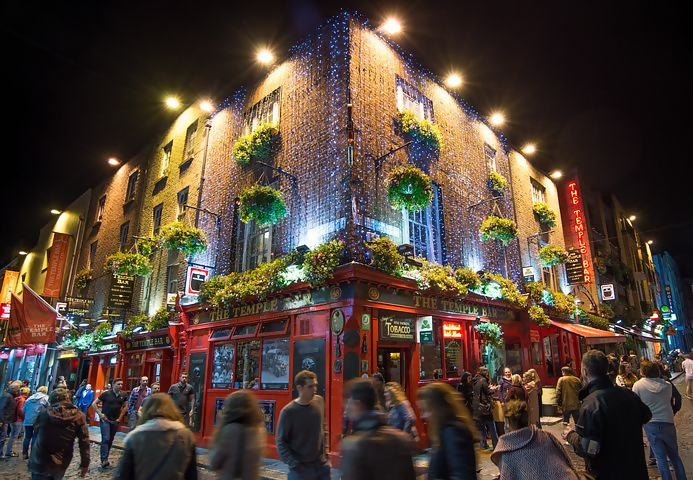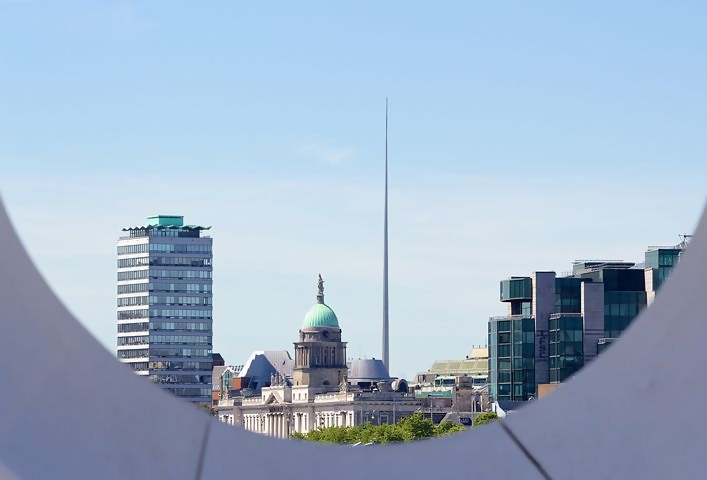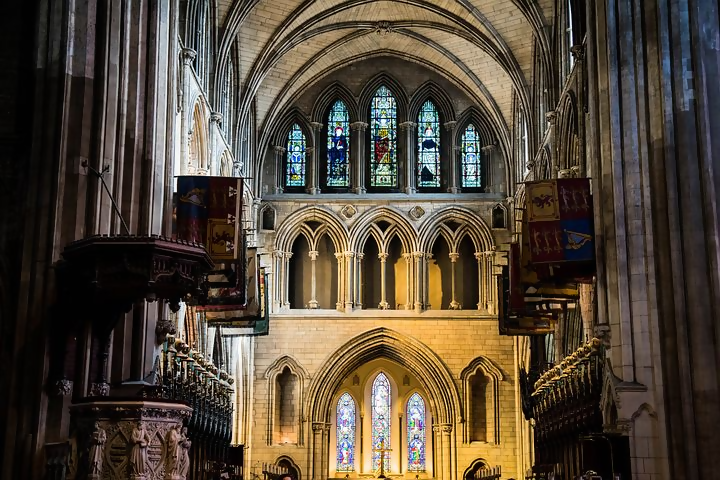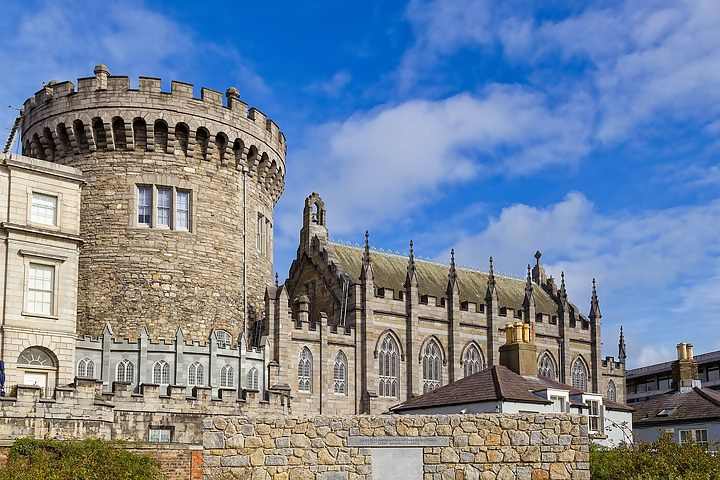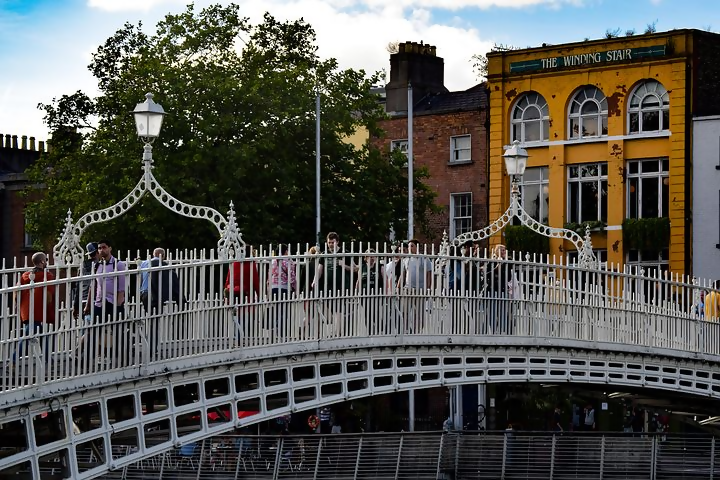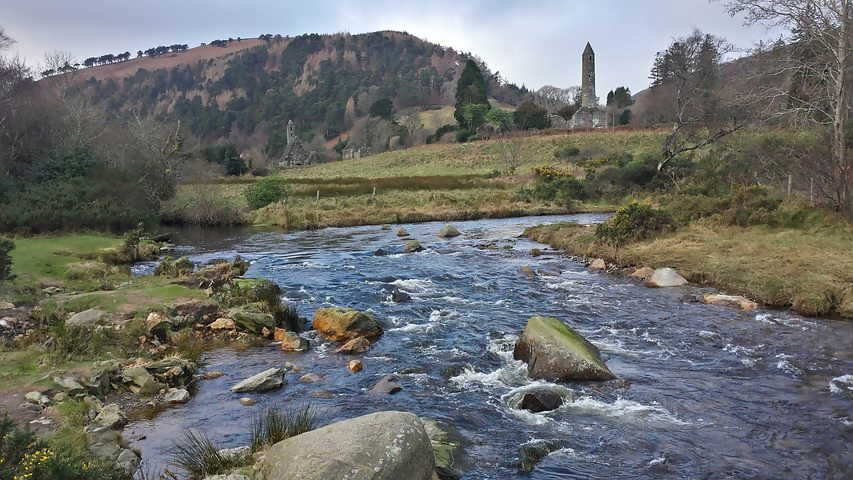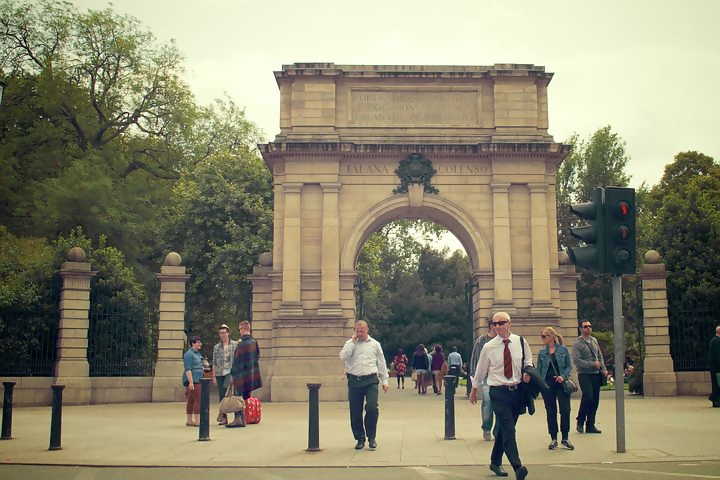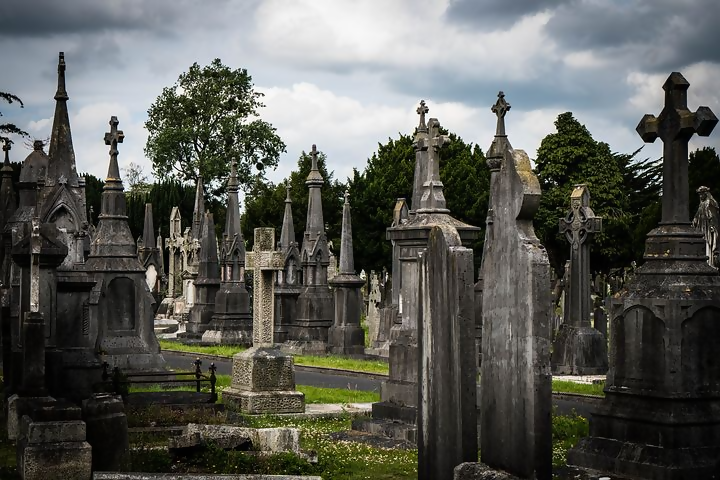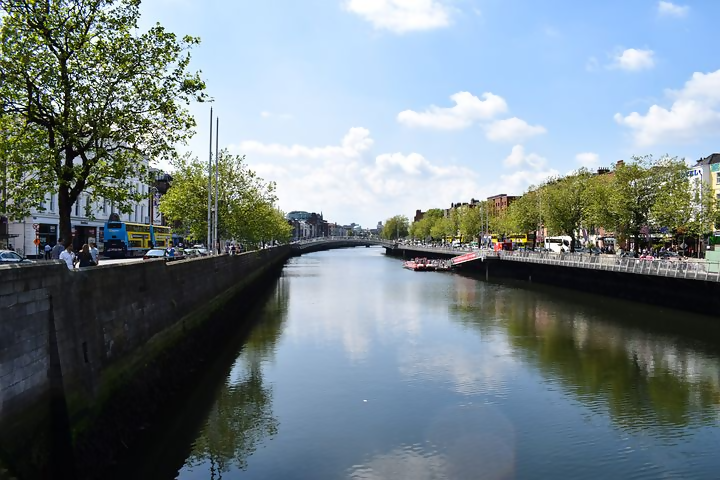
8 Memorable Places in Dublin, Ireland….and They’re Not All Pubs!
If the ‘luck of the Irish’ is on your side and you find yourself in the infamous city of Dublin, the capital of the Republic of Ireland …at the mouth of the River Liffey, there will be countless things for you to do and see while you’re there.
The city of Dublin is known for its charming streets, colorful doorways, live music and historic architecture. It may be one of Europe’s smaller capital cities, but it has been known to steal the hearts of visitors, with something for everyone.
The people of Dublin are all such characters, as well. Whether they are sharing long-winded stories, singing local songs or telling an odd joke to make you laugh, the locals never fail to put a smile on your face. Dublin’s historic buildings include Dublin Castle, dating to the 13th century, and St. Patrick’s Cathedral, founded in 1191. City parks include landscaped St. Stephen’s Green and huge Phoenix Park, containing Dublin Zoo. The National Museum of Ireland explores Irish heritage and culture.
And…because the city is located on the east coast, day trips and excursions to the mountains or cliff sides are just a bus ride away. In this area you can witness some of the most vast and beautiful scenery in all of Ireland.
1. Party like the Irish at The Temple Bar
The Temple Bar is quite possibly one of the most iconic bars in all of Dublin, with tourists flocking from all over the world to have a drink inside its famous walls. Although the history of the bar dates back to the early 1300s, it still remains popular to this day due to its famous red exterior, its great location in the heart of the city, as well as being a huge part of Dublin’s central nightlife scene. Looking to enjoy a glass or two of strong Irish whiskey? This is the place.
This famous Bar is located on the south side of the River Liffey in one of the oldest areas in Dublin. The area is a maze of narrow streets full of pubs and live music. It’s filled with medieval architecture, food markets and Europe’s oldest theatre. It’s no wonder this area is renowned for being the cultural quarter of Dublin. Take a stroll down the cobbled streets and explore its galleries, vintage clothing shops, record stores and more.
2. Take a photo with The Spire of Dublin
One of the easiest monuments to spot from afar, The Spire stands proudly in the center of O’Connell Street towering approximately 120 meters above ground. This completely stainless-steel structure is about 3 meters in diameter at the base and 15 centimeters at its apex. During the day the streetscape and its people are softly reflected in the stainless steel surface of the Spire. From its base up to about 10m, the stainless steel is partially polished in an abstract design to provide a slightly higher reflective surface than the remainder of the Spire.
On sunny days, you will notice that its exterior will be illuminated by the sun – lighting up the monument for all to see. At dusk, the Spire’s stainless steel surface is softly lit by the ambient lighting of the streetscape. At night the base is gently lit and the tip illuminated from a light source within to provide a beacon in the night sky over Dublin.
3. The Beauty of St. Patrick’s Cathedral
Known as the largest church in all of Ireland, St. Patrick’s Cathedral is actually one of two cathedrals that were built on Dublin soil. The other church that shares the city is Christ Church Cathedral which is nearby. Both are spectacular but St. Patrick’s Cathedral is more famous and visited by tourists.
The cathedral was originally founded in 1191 and is considered the National Cathedral and a brilliant architectural wonder – its beauty can be noticed both inside and out. It is said that this church is where St. Patrick himself baptized early Christians over 1,500 years ago.
The writer Jonathan Swift, author of Gulliver’s Travels, was once Dean of the cathedral. He’s buried there too. On a sunny day, you’ll find tourists and locals alike enjoying the cathedral grounds soaking up the history.
4. Prehistoric Dublin Castle
Take a trip back in time by visiting the famous Dublin Castle. Built in the early 13th century, it sits on 11 acres on the highest ridge in the locale. It’s actually located on the site of a Viking settlement. Excavations have even uncovered parts of a Viking medieval castle and early defense structures. The stone covered embankment, the medieval curtain wall and the steps that led down to the original moat have all been preserved for you to see on your next visit to this historical masterpiece. You can walk through it at your leisure and behold the Castle’s many rooms, gardens and museums such as the Chapel Royal, the Chester Beatty Library, the Garda Museum and the Revenue Museum.
With over 800 years of Irish memories encapsulated within its walls, this incredible structure has witnessed some of the most pivotal events in the country’s history. Before the 1916 rising, it served as headquarters for the British administration in Ireland. In 1922, following Ireland’s successful quest for independence, Dublin Castle was handed over to the new Irish government so visitors could experience its beauty and important place in history.
5. Walk Across Ha’Penny Bridge
Every visitor to Dublin should walk across the Ha’Penny bridge at least once. It’s one of the top things to do in Dublin. This historic bridge over the River Liffey was built back in 1816, to replace the many ferries that shuttled people back and forth.
A strikingly unique white-piecketed wonder, the Ha’penny Bridge is known as the first pedestrian bridge to cross the River Liffey. Its name was derived from the price pedestrians had to pay (a “halfpenny”) to cross the bridge back when it was built in 1816. Today, it has become one of the main “monuments” that identify Dublin – appearing on postcards, tourism brochures, books and memorabilia.
6. Visit Wicklow Mountains
One of the best day trips out of the city – and a must-see during your trip to Dublin – is a tour of Wicklow Mountains. These beautiful mountains form the largest continuous upland area in Ireland. The mountains have a temperate oceanic climate with mild, damp summers and cool wet winters – and have been inhabited since Neolithic times.
Housed in this area are a number of typical monuments: Passage tombs that survive to the present day and The Monastery of Glendalough, founded in the late 6th century. Following the Norman invasion in the 12th century, the Wicklow Mountains became a stronghold and hiding place for Irish clans opposed to English rule.
The entire upland area of the Wicklow Mountains is considered a special area of conservation and is protected. It includes the Wicklow Mountain National Park that was established in 1991 to conserve the local biodiversity and landscape.
Famously known for the filming location of the popular romance film, P.S. I Love You, this unbelievably beautiful landscape looks even more magnificent in person than it does on-screen. Make sure to bring your camera when you come to experience the beauty of Wicklow Mountains.
7. Relax at St. Stephen’s Green
Over the past 4 centuries, St. Stephen’s Green has played a key role in Dublin’s history. When you wander through the peaceful surroundings, it’s hard to imagine that this site was once a battleground during the 1916 rigroundskeeperen in the height of battle. James Kearney, the park grounds keeper convinced both sides to stop fighting for one hour a day… so he could feed the ducks of course!
These days, St. Stephen’s Green is a popular Dublin park with it’s lush green grass, a variety of plants and flowers and a few marvelous bodies of water. It is a piece of paradise in the center of Dublin and a perfect place to get away from the hustle and bustle of the city. Bring a picnic to enjoy by the pond but make sure you bring a few slices of bread for the ducks and geese….they still inhabit the ponds. In short …If you want to relax, this is the place to enjoy a peaceful day in the park.
8. Wander through the Graveyards at Glasnevin Cemetery Museum
Rated #1 on TripAdvisor’s list for Top Things to Do in Dublin, the Glasnevin Cemetery Museum is an atypical, but thoroughly interesting way to take in some Irish history. Built in 1832, Dublin’s Glasnevin Cemetery is surrounded by seven watchtowers which were home to armed guards. Ireland’s most famous cemetery was a key target for bodysnatchers!
You can wander through some of the various graveyards of famous Irish political figures, poets, writers and other people of interest, along with hearing some very informative commentary about each person, and the political history of Ireland. It is also the final resting place for many historical figures like Michael Collins, a soldier and politician who played a key role in the struggle for Irish independence, Brendan Behan, Irish poet, novelist, and playwright who was imprisoned for IRA activity and Luke Kelly, vocalist in one of Ireland’s greatest bands, The Dubliners.
Nowadays, Glasnevin Cemetery Museum has vowed to tell the stories of over 1.5 million people who helped to shape the Ireland of today. It’s more than a cemetery – it’s a huge piece of Ireland’s history.
What Not To Do In Dublin…
- Never tell an Irish person that YOU are also Irish (unless you actually live in Ireland). Not a good idea.
- Never call an Irishman (or Irish woman) British. In fact, try not to mention the UK at all. The Irish are fiercely independent.
- Don’t expect to drink all night. Most pubs in Dublin actually close at 11:30pm on weeknights and 1am on weekends.
References:
https://www.thecrazytourist.com/top-25-things-to-do-in-dublin/
https://expertvagabond.com/dublin-things-to-do/
https://en.wikipedia.org/wiki/Wicklow_Mountains

